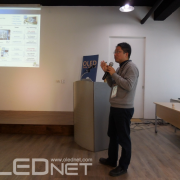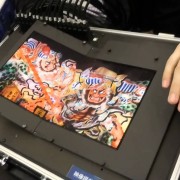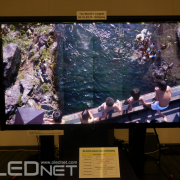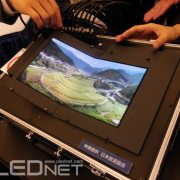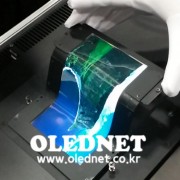[2015 OLED Evaluation Seminar] Oxide TFT Technology that 2015 should Spotlight
By Hyun Jun Jang
During the 2015 OLED Evaluation Seminar (December 4) hosted by UBI Research, Professor Jin-Seong Park of Hanyang University gave a presentation titled OLED Oxide TFT Technology Trend, discussing oxide TFT, related industry, and technological issues as well as TFT technology that should receive the spotlight in 2016.
Oxide TFT has an advantage of high mobility and large area uniformity compared to a-Si TFT. As such, it is being more applied to large area OLED panel and used in LG Display’s OLED TV.
Park revealed that there are mainly 4 issues regarding oxide TFT and led with the reliability issue. Oxide TFT is essentially in amorphous state but when crystalized, the density and crystallizability increase; as oxygen does not move away and stay in place, defects occur less and reliability is high. Japan’s SEL and Sharp published CAAC (C-Axis Aligned Crystal) structure related oxide TFT paper, and Cornell University produced CAAC oxide TFT by increasing the substrate temperature and adjusting oxygen’s partial pressure.
The second issue is composition ratio. Park reported that composition ratio is the most closely related characteristic to TFT’s mobility. He revealed that recently research is being carried out centering around IGZO (indium gallium zinc oxide), but also oxide TFT research with different composition ratio is continually published. For example, ITZO (indium tin zinc oxide)’s mobility has been reported to reach 30cm/Vsec, and BOE is working on the related research. Research results, which showed increased mobility and reliability for IGZTO, which is IZTO with G added, was published, as well as ZnON (zinc oxide nitride) TFT’s 100cm/Vsec mobility. BOE demonstrated ZnO TFT applied 14.1inch AMOLED.
The third issue is the device structure. Park explained that efficiency can increase when top gate structure is used to oxide TFT as parasitic capacitor is not needed, but that the process is difficult. However, Park reported that JOLED revealed when self-alignment is used the number of masks used can be reduced and increases performance. This structure is applied to OLED TV by LG Display.
Lastly, Park gave the safety of device as the last issue. Oxide TFT can exhibit degradation effects from light, oxygen, hydrogen, and moisture. Park reported that hydrogen particularly has great effect on the safety. He explained that although the current prevailing OLED TFT is LTPS, as the panel becomes larger there will be technological competition between oxide and LTPS. Reporting that TFT which is cost efficient and shows high performance in diverse factors such as resolution will dominate the market, Park concluded his presentation.

